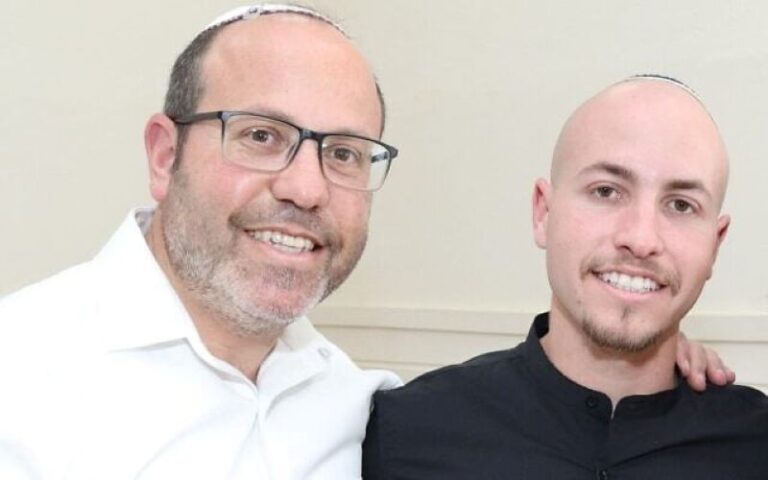By Rabbi Yair Hoffman
It has all the hallmarks of an epidemic, spreading from school to school, from class to class, and from neighborhood to neighborhood. It is plaguing ten year-old girls and even those as young as seven or eight.
Yes, the S – Epidemic is here, and is causing major anxieties in the neshamos of our precious young girls. It is a battle for the very Neshama of our children and their emotional well-being.
Young girls ages 7-13 are obsessed with Sephora.Foundation, creams, gels, face masks, facial peels, Drunk Elephant products – the ultimate in gashmius for even third graders!
It is clear as day that young girls do not need to spend time, money, and emotional energy and angst on makeup or skincare products at their age. The new trend is undermining the hard efforts of our Torah teachers.
One Sephora employee is quoted as saying, “I have seen elementary and middle school girls in [school] uniforms, who purchased maybe 500 dollars worth of products.”
The culprits are the influencers, tik tok videos, and social media.
So what is the solution?
The Mishnah in Pirkei Avos (4:1) teaches: “Who is honored? One who honors others.” If your daughter feels pressure to wear makeup or use certain beauty products to be “cool,” share with her the wisdom of Ben Zoma, who understood that true honor comes from how we treat others, not from external appearances.
Seeking others’ approval through superficial means is like “drinking salt water to quench thirst” – it only increases the craving. Have a gentle conversation about why she thinks these products are important. Often, the underlying worry is about fitting in or being liked.
The Ramban, in his famous letter to his son, emphasizes that true beauty emerges from speaking gently and treating all people with respect. Ask her why her friends like spending time with her. Is it because she’s kind? Funny? A good listener? These qualities align with what the Torah considers true beauty.
Decoding Beauty Marketing
Young girls are especially vulnerable to beauty advertising messages. The Chofetz Chaim warns against being swayed by the superficial desires that others instill in us. As it says in Pirkei Avot (4:21): “Jealousy, desire, and honor remove a person from the world.”
Help your daughter become more ad-savvy by discussing:
- The Mesillas Yesharim teaches that advertising creates artificial desires that distance us from our true purpose
- Rav Dessler explains in Michtav M’Eliyahu that the more we chase material desires, the more enslaved to them we become
- The Vilna Gaon teaches that what appears perfect on the outside often conceals emptiness within (like filtered photos)
- Rav Volbe in Alei Shur discusses how media manipulation can slowly erode our values
Practical Protection Strategies
The Rambam teaches in Hilchos De’os that maintaining physical and spiritual health requires establishing healthy boundaries. Consider:
- Creating “ad-free zones” in your home where beauty marketing can’t reach
- Making a game of spotting manipulative marketing tactics
- The Orchos Tzaddikim’s teachings on cultivating genuine self-worth
Social Media Awareness
Rav Dessler would likely have viewed social media as one of the greatest tests of our generation regarding artificial desires. Consider:
- The Peleh Yoetz’s teachings about protecting our eyes and minds
- Having open discussions about filtered images through the lens of “midvar sheker tirchak” (distance yourself from falsehood)
- The Ramchal’s guidance in Mesillas Yesharim about avoiding situations that challenge our values
- Setting healthy boundaries based on the principle of “making a fence around the Torah”
Building Real Self-Confidence
The Maharal of Prague teaches that each person is a unique creation with a divine purpose. Instead of focusing on appearance-based activities, encourage:
- Torah study and middot development
- Chesed projects that build true self-worth
- Activities that develop her unique talents (as the Ramban describes)
- Leadership opportunities in tzedakah projects
- Skills that serve others
The “Must-Have” Product Myth
This will be one of the greatest challenges of parenthood. When your daughter feels pressure to buy specific beauty items, share the wisdom of the Dubner Maggid who often used parables to explain how marketing creates artificial needs. You can possibly discuss; the Alter of Novardok’s teachings about freedom from social pressure; Rav Yerucham Levovitz’s insights on discovering our true desires’ The Chazon Ish’s guidance on making decisions independently and The Baal Shem Tov’s teachings about finding joy in simplicity
Setting Healthy Boundaries
The Rambam provides clear guidelines about maintaining physical and spiritual health. You can start by establishing family guidelines based on:
- The laws and spirit of tznius
- The Shulchan Aruch’s emphasis on moderation
- The Rambam’s health guidelines
- The principle of “kedoshim tihiyu” (you shall be holy)
Dealing with Peer Pressure
The Gemara (Sanhedrin 109b) teaches about the importance of maintaining our values even when surrounded by contrary influences. Help your daughter by:
- Studying stories of Chumash role models like Sarah and Rivka
- Building friendship with those who share Torah values
- Understanding the Mishna’s teaching: “In a place where there are no leaders, strive to be a leader”
Leading by Example
Parents should embody the teaching of “V’halachta B’drachav” (walking in Hashem’s ways):
- Modeling the middah of histapkus (contentment) taught by the Orchos Tzaddikim
- Expressing gratitude based on “Who is rich? One who is happy with their portion”
- Avoiding negative self-talk, as we are created “b’tzelem Elokim”
- Celebrating spiritual achievements over physical appearance
Empowering Critical Thinking
Guide your daughter with questions rooted in mussar teaching:
- “Does this align with my role as a bat Yisrael?”
- “Am I being influenced by the yetzer hara of comparison?”
- “What would my role models from Torah think about this?”
- “Does this bring me closer to or further from my true purpose?”
Remember: The Mishkan’s beauty was not in its gold and silver, but in how it elevated the spiritual. Similarly, true beauty comes from developing our middot and living with purpose. As the Kotzker Rebbe taught, “All that glitters is not necessarily gold, and all gold does not necessarily glitter.”
The strongest protection against materialistic influences is a deep connection to Torah values and understanding of our true worth as children of Hashem. Help your daughter understand that her worth isn’t determined by products she owns or how she looks, but by her middos and ma’asim tovim (good deeds).
A Final Thought
The Gemara tells us that before Shlomo HaMelech built the Beis HaMikdash, he first wrote Shir HaShirim, teaching us that true beauty must be understood in its spiritual context. Similarly, help your daughter see that her true beauty lies in her neshama (soul) and the unique light she brings to the world through her mitzvos and middos tovos.
The author can be reached at [email protected]












4 Responses
Minors can legally “own” money. It is their parents’ responsibility. If a minor has money, and it isn’t from the parent, it is a problem of juvenile delinquency.
Is it surprising that this trend for young girls is taking hold in our communities? First of all, there is the general focus on gashmius and externals that replaces the goals of yiddishkeit with the goals of materialism (seen in weddings, home furnishings, clothing, houses, cars, camps, seminaries, food, shalach manor, etc). Can we blame a child for feeling and succumbing to peer-pressure that says you must have this-and-that item to fit in, to be accepted, to be “normal”- when she sees adults doing it all the time? Secondly, in a few short years this 12 year old will be in shidduchim, where every detail of her physical appearance will be under scrutiny. She will be advised to diet, to see a dermatologist, to never leave the house without a full face of makeup, to spend heavily on clothing, and given message after message that her main “selling point” and value is her appearance. How deceived she will feel if up until then she was being given beautiful messages from our gedolim and chachomim about her worth being internal.
It’s the fault of the parents. For one thing, these children shouldn’t have money like that.
If we follow the gedolim from the start…..unfortunately people are actually allowing their children to social media…..why do they even have access to the internet at that age….. TOTAL shocker!!!
Would you allow your children to play with a gun !!!
LETS GET TO THE ROOT OF THE PROBLEM
LETS STOP WITH THE BAND AIDS……BECAUSE TOMORROW IT WILL BE SOMETHING ELSE